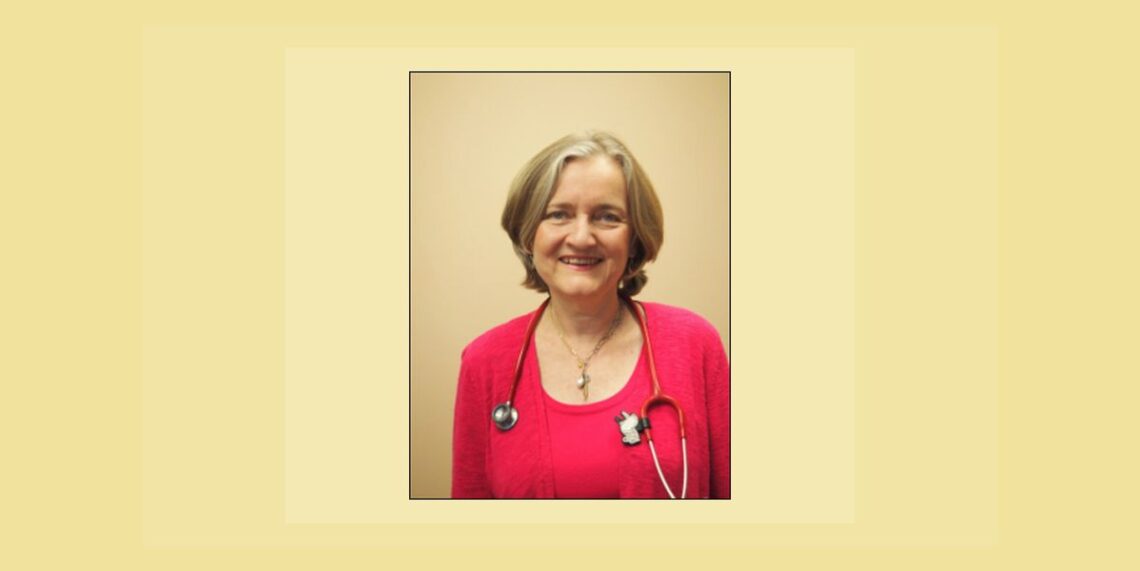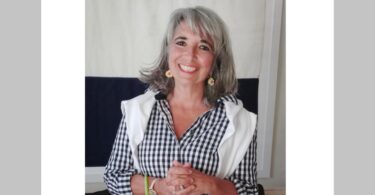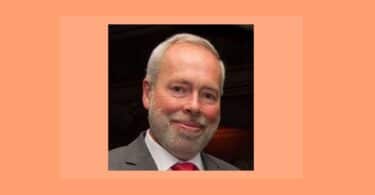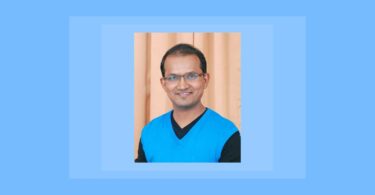AS: You practiced pediatric medicine for 20 years and were chairman of the pediatric department at Chestnut Hill Hospital. After all those years, what led you to homeopathy?
LB: It was a series of events that lead me from an allopathic practice to homeopathy. One important factor was my failure to find viable solutions for my own frequent headaches. The headaches led me to try a variety of “alternative” treatments for myself. They eventually resolved through dietary changes, acupuncture, craniosacral therapy and constitutional homeopathic treatment.
Another factor was that I took my Hippocratic Oath (“First, do no harm”) seriously and became increasingly dissatisfied with the treatment choices that were the standard of care for my pediatric patients. There were too many side effects and often a lack of real efficacy. Over the years I saw recommended treatments come and go. A new wonder drug or vaccine would come on the market only to be withdrawn a few years later when problems with it came to light. I began to be suspicious of all new treatments until they were adequately proven. New drugs would be promoted as effective but when I read the studies they showed perhaps a 5 to 10% reduction in symptoms. Was that really the best we could do? Or new drugs would be promoted as mild and/or safe when they were really neither. For example when Tacrolimus ointment came on the market it was promoted as a mild alternative to steroid creams for children with eczema. I recognized the generic drug as one we used on the children’s kidney transplant ward as an immunosuppressant to prevent rejection. Pretty powerful stuff. Not what I want to give my infant patients with a bit of a rash.
Over the years I couldn’t help but notice that the healthiest children in my practice were the ones whose parents had decided not to immunize. I rarely saw these children for sick visits. They virtually never had chronic diseases and they possessed a certain vitality or spark of life that I didn’t see in many of the immunized children. While some of my friends used homeopathy and one was even studying it, it seemed odd to me.
A turning point came in 1996 my daughter was hospitalized after surgery for a ruptured appendix. A friend offered to give her a Therapeutic Touch treatment. I had no idea what it was but trusted the friend. It turned out that the treatment was amazingly powerful. It was my first introduction to any kind of energy treatment. Shortly after that another friend convinced me to join her and enroll in a Reiki training program. Once again I felt the energy first hand and understood its power. I began reading books on energy medicine, homeopathy and alternative medical care and attended some conferences on Holistic Medicine. I began looking at my patients differently, in a more holistic way. It was at a Holistic Pediatric conference at John Hopkins in 2000 that I heard Iona Razzi MD speak about her homeopathic pediatric practice. I was intrigued at the cases she presented.
At Dr. Razzi’s suggestion I attended the NCH summer school the following spring for their Homeopathy 101 weekend course. I was fascinated and had a sense of coming home, of finally finding a group of people who thought like I did. It was pouring down rain as I drove home from this conference up highway 95. I thought through all the advantages of Homeopathy. It was natural. It was holistic. It didn’t cause side effects and was safe for children and pregnant women. It got to the true underlying cause of disease. It was cost effective. It could treat familial tendencies to disease. It was based on sound data and a systematic approach. And so on.
It was a Eureka moment as I realized that I’d found what I was looking for: a better way of practicing medicine. Right about then the storm cleared and ahead of me was a beautiful rainbow stretched across the horizon. A few miles later a second rainbow appeared on the horizon, then a third and finally a fourth rainbow as I made my way up the highway. By then I was in tears. It was clear that I needed to learn to practice Homeopathy. That was my Epiphany.
AS: Where there any homeopaths who influenced your work, either in person or through their writing?
LB: I’d have to say that my three teachers at Northwestern Academy of Homeopathy have influenced me more than any other homeopaths. Eric Sommerman, Val Ohanian and Laurie Dack. Once I decided to go to Homeopathy school I put a lot of time and effort into investigating all my choices. I was most impressed with the depth of clinical experience and dedication to teaching that the three of them exemplified. They gave me a firm foundation in the basics of classical homeopathy as well as an introduction to modern methods such as the Sensation Approach. Beyond that though, they opened me to a different way of thinking in general and to an ongoing practice of self-examination. It was emphasized in our curriculum that one cannot be an effective homeopath without knowing oneself well.
I’ve attended seminars with a number of internationally known homeopaths but the ones who have had the greatest effect on my practice are Rajan Sankaran, Dinesh Chauhan and other members of their group. While I don’t practice Sensation method exclusively, I draw on it frequently. I’ve read most of Sankaran’s books and refer to them often. I especially like his latest book, Synergy where he talks about integrating different methods, traditional and more contemporary, to arrive at the remedy choice. This is what I find most effective in practice. One needs to adapt the case taking and analysis style to the client at hand. I’ve also found Dinesh Chauhan’s process of case taking to be quite helpful. It offers a more systematic approach and while again, I don’t use that exclusively, it has definitely informed my practice. It has helped me to focus on understanding the client’s own point of view and what is their experience.
AS: You’re also knowledgeable in the use of herbs, Brain Therapy, Body Talk and Reiki. Do you find that any of these complement homeopathy?
LB: Yes, I often use herbs along with homeopathic remedies. The big advantage of this is that it allows us to prescribe just one constitutional homeopathic remedy yet give support for specific symptoms at the same time. For example, if someone is coming down with a cold or other acute infection I will recommend specific herbs and ask them not to take homeopathic remedies for the acute illness (though sometimes a low potency of their constitutional remedy is recommended). Another way that herbs are helpful is to give extra support for healing that is organ- specific. One of the most common types of herbs that I recommend are adaptogenic herbs such as Ashwaganda, Rhodiola, Ginseng and Tulsi. These are herbs that help to strengthen and balance the adrenal glands. Many people I see today are very depleted and chronically tired. Adaptogens help them to regain their vitality. There are a variety of different adaptogens, each with their own profile of benefits. Some tend to be stimulating and others more calming. Many have other effects in the body in addition to their actions on the adrenals (eg Ashwaganda is helpful with musculoskeletal pain, Shatavari with female reproductive tract health). For anyone who’s interested there’s an excellent book, Adaptogens, Herbs for Strength, Stamina and Stress Relief, written by my teacher, David Winston.
I often use herbs to support the immune system as well. One of the most common reasons that parents bring their children for homeopathic care is recurrent infections such as ear infections, sore throats, sinus infections, pneumonias or urinary tract infections. By the time they arrive in my office they’ve often had multiple courses of antibiotics that have further weakened the immune system. Herbs such as elderberry, echinacea, goldenseal, astragalus, pseudostellaria, and medicinal mushrooms can give extra support to their immune systems while the constitutional remedy does its work. Different herbs can be used for prevention and/or acutely for treatment.
Many herbs are known for helping specific organ systems and can be used supportively along with homeopathic treatment for example comfrey, calendula and/or plantain for skin eruptions or marshmallow, corn silk and/or equisitem to soothe the bladder.
You also asked about the various energy therapies. I became a Reiki master several years before I began studying homeopathy. The firsthand experience working with an energy modality helped me to better understand and to be confident in using Homeopathy. It’s rare that I do a formal session anymore but my Reiki background supports me in holding a healing space for my clients. A case witnessing (I prefer Dinesh Chauhan’s term to the usual “case taking”) session should be therapeutic in and of itself. Often, healing can begin even before a remedy is decided upon and given. Also, I encourage any of my clients and their parents to take Reiki or other energy healing courses for themselves. Anything that empowers them to participate actively in their own healing is a positive step toward well being.
AS: What are the biggest challenges for you in practicing homeopathy?
LB: Historically, probably the biggest challenge for me in practicing homeopathy was starting all over again at age 50. I’d been practicing allopathic medicine for over 20 years at that point and felt pretty comfortable that I knew what I was doing, at least as much so as any pediatrician. It was challenging to be a beginner again and to have to go back to the memorizing facts stage of learning. It’s interesting that I recently came across a quote by nature photographer, Kim Soles. She says “Throughout our twenties, thirties and forties, we want to know everything and at times we think we do and then fifty comes along and the only thing we are sure of is that we truly don’t know anything at all.” I can definitely identify with that. In some ways, however, the not knowing was very freeing. I really like having some mystery in my life. I don’t need to know the exact mechanism by which homeopathy works. I like just having that sense of wonder that it often does work so well. And I love that I just need to perceive what is before me then match that with a remedy. One of my teachers, Laurie Dack, once told us “In homeopathy you don’t need to fix anything, just be with it.” I wrote that on the cover of my repertory where I can remind myself of it daily.
Another challenge that I deal with daily is trying to explain homeopathy to my clients, many of whom arrive at my doorstep with no idea what it is. Many of them are very much into an allopathic mindset. I live in what may be the world capital of Allopathy: Philadelphia. There are six medical schools and who knows how many university hospitals in the city. Often, people come to homeopathy as a last resort. They’ve already had all the tests, surgeries and drugs and now that nothing’s worked they’re looking around. How much simpler it would have been to treat them if they’d only come for homeopathy first! It’s not unusual that they’re looking to Homeopathy for help with just one of their many problems while still planning to pursue allopathic treatment for everything else. It can be a challenge to get them to think more holistically and to believe that everything is connected.
Perhaps the biggest challenge has been having to figure out so many things for myself once I got into practice. In allopathic medicine there were always mentors, colleagues and students working side by side. I sorely miss that, both for the learning and the comaraderie.
Lastly, the vast array of different approaches to homeopathy sometimes makes it overwhelming as to where to focus one’s ongoing learning. Should I put more time into learning the Sensation approach? Should I study with Vithoulkas? Should I attend a seminar with the Vijayakars or learn about the Banerji protocols? The list goes on. There are so many seminars and online learning opportunities in homeopathy that one really needs to stay grounded and not forget that there is so much we can do with just our basic training in classical homeopathy.
AS: A growing problem nowadays is autism. What have you learned about treating it? What’s been your experience when treating it?
LB: Ten years ago I was still working in an allopathic group pediatric practice. In retrospect I really knew very little about the causes of or treatments for autism. Since then I’ve studied with a number of homeopaths who’ve helped me better understand autism as well as attended some Functional Medicine conferences (DAN and MAPS) focused on treatment of autism. I’ve also learned much about nutrition and gut healing, including becoming a GAPS practitioner.
What I now understand is that Autism is a whole body condition with multifactorial causation. There is often a genetic predisposition and family history of disease particularly autoimmune diseases. These children are more susceptible to a wide variety of environmental influences than the average child. There is no one causative factor but certainly environmental chemicals, vaccines and other drugs, electromagnetic fields and dietary inadequacies all play a role. These children all have inflammation in the brain and body. They usually have significant digestive disturbances, nutritional deficiencies, altered immune response and impaired ability to detoxify
From a homeopathic point of view I find that autism is one of the most challenging conditions to treat. First, is the challenge to find a good remedy for the non-verbal child. For the most part I’ve used a classical approach to case taking and found this effective in many instances. I base a lot on observations of the child’s behavior, both my own observations in the office and parents, teachers and therapists’ observations in other settings. The mother’s recollection of her state during pregnancy has often given clues to the child’s remedy. Overall, I’d say this approach works best with younger children who have not yet had much in the way of other therapies or with older children who are able to express themselves clearly.
In the past year I’ve had training in CEASE therapy and have begun to use that in some cases. So far, I’m seeing encouraging results with this, clearing the effects of vaccine injuries. I’m looking forward to working more with this in the future.
There are often obstacles to cure that need to be addressed in these kids. Usually these children are extremely picky eaters and have significant nutritional deficiencies. Parents need counseling on providing a healthy diet and getting the child to eat it. Sometimes, once they get a remedy they become more flexible with dietary choices. At a minimum they need a clean, nourishing whole food diet (I recommend Weston A. Price Foundation as a source of nutritional information for most families). For many children a special diet such as Gluten-free, Casein-free, Soy-free, GAPS, SCD or BED is helpful in speeding their progress. Most need some basic supplements such as Omega-3’s, Probiotics, vitamins and minerals at least until their eating behavior improves.
When these things are in place children benefit more from other therapies they receive and I hear positive reports of their progress. Some children lose their autism diagnosis. This is important information for families of children with autism to know.
For me the most exciting area in the future is in using homeopathic and nutritional interventions to prevent autism and other chronic conditions. There is much that can be done here. First and optimally, prospective parents would have constitutional treatment for themselves before conceiving, to optimize their own health and address any miasmatic influences in the family. During pregnancy, homeopathy is a valuable first line of treatment that is safe and effective in keeping both mom and baby in good health and can often help us avoid the need for OTC and prescription medications that could negatively impact the fetus. Likewise, during delivery, homeopathic treatments can make for a safer birth with less need for interventions. Of course, once the baby is born, homeopathy will keep the child in optimal health. Homeoprophylaxis can also be an important part of educating a child’s immune system for optimal health.
AS: I hope your story of transformation from allopathy to holism and homeopathy will inspire other practitioners. You took it all the way and you’re now highly sought out for those skills. Thank you for sharing with us today.







Very, very interesting. Thank you-